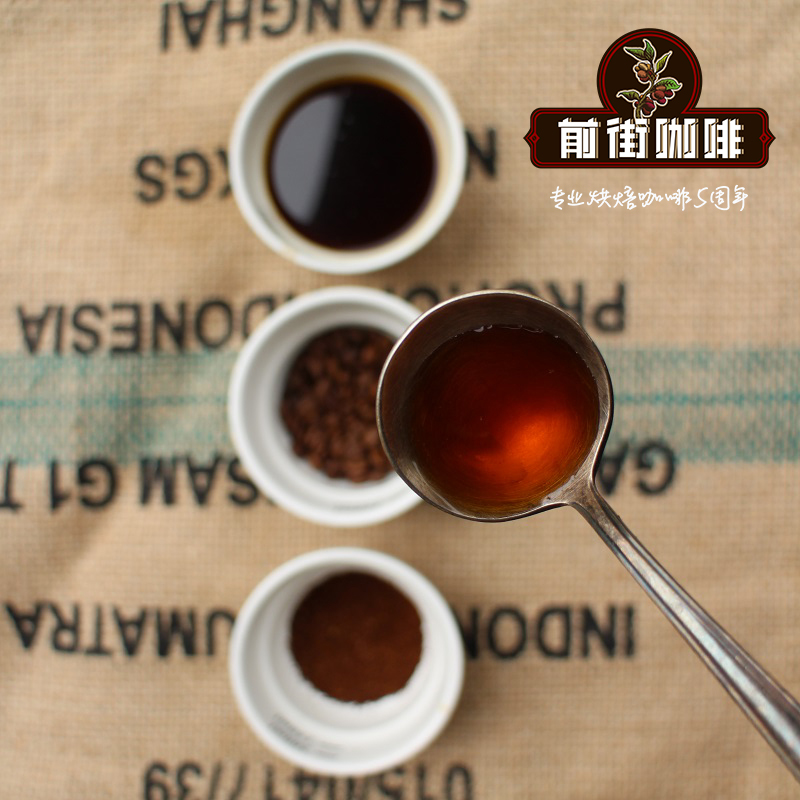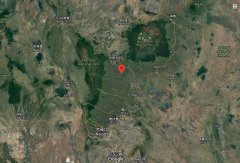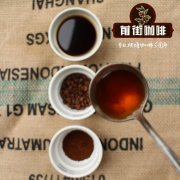How will the capacity of the baking machine and the amount of baked beans affect the baking? How long does it take to bake coffee?

When you bake a batch of green beans, do you consider the capacity of the bean dryer and adjust the baking method? How much effort did you put into baking this batch of beans? Understanding the capacity of the bean dryer and how roasting affects coffee roasting can give you a better understanding of roasting and control over the variables that make better beans.
In this article, let's see how the capacity of the bean dryer and the amount of beans baked affect the baking results.
Know the recommended baking amount of the machine
Each coffee dryer has a recommended capacity size, which is set by the manufacturer. This is the maximum recommended amount of beans you can bake, not the amount of beans you can bake for best results. Manufacturers usually try to increase this amount as much as possible.
Carola Mapp is the head baker at Pharmacie Coffee Roasters in the UK. "As far as I know, in specialty coffee, it's common to roast up to 80 percent of the dryer's set capacity to better control the roasting results," she says.
Scott Rao writes in his book: "Users should not assume that the rated capacity of a machine is its optimal batch throughput. I have found that many machines, though not most, use 50 to 70 percent of their rated capacity to roast to produce the best coffee."
We say here don't use the maximum capacity set by the manufacturer to bake beans. The baked beans perform better, but what does this mean? Let's see what happens when too many beans or too few beans are thrown into the bean dryer.
Too many baked beans.
In order for the drum of the bean dryer to get steady heat and for the beans to develop well after the first burst, you need to apply enough heat at the beginning of baking. In an overloaded bean dryer, there may not be enough energy to heat all the beans correctly, which will cause the temperature to rise too slowly and increase the total time required to reach optimal bean development. As a result, coffee may have roasted and flat flavors.
Steve Cuevas, chief bean baker at Black Oak Coffee Roasters in California, said: "If you drive a V4 with six passengers, you're going to use more gas and time than a V12 for the same number of passengers. Cars with V12 engines are also faster. In the same way, if you bake fewer beans or increase the machine's operating energy, you can avoid baking too long."
The bean dryer will also be less efficient in turning the coffee beans, because the drum is not large enough, the beans cannot be evenly turned, and the coffee beans will expand during the roasting process, so the drum space will be more overloaded.
Roasting too much coffee at once may expose some beans to excessive exposure to the direct heat of the drum, while others may not absorb enough heat, which means the beans will not be roasted evenly and increases the likelihood of burning.
Steve said: "When you change the batch size of the beans, you actually increase or decrease the amount of thermal convection, affecting the chance that hot air will reach the beans, so you are actually creating more surface area for the coffee beans to transfer heat."
Alexandru Niculae, founder of Bob Coffee Lab, said: "Imagine you're in a crowded place and everyone is smoking, and you'll soon be covered in smoke." And this happens in the bean dryer, too. If you bake too much coffee beans with too few calories and too much roasting time, it will make the coffee beans have a strong smoky flavor, which is completely contrary to our goal of clean coffee flavor."
"Even if you buy good green beans, baking them badly is meaningless and wasteful. Focus on the quality of each link. If you want to bake more beans at once, you should buy a bigger machine.」
Too few baked beans.
The problem of baking too many beans can be solved by reducing the amount of beans, but too few beans can also cause problems.
Carola said: "In my experience, baking less than 1/3 of the full load indicates too little baking, and too little baking actually makes it harder to control the temperature during baking." In general, you will need to adjust the preheating temperature and heat according to the amount of beans to compensate for the change in the amount of beans baked."
Scott Rao, in his book In The Coffee Roasters Companion, warns that there may be problems if you roast small batches of coffee without adjusting the roasting variables, and he lists the following possible situations:
Less airflow required: this prevents beans from being sucked out of the dryer
Slow drum speed: Standard drum RPM causes coffee beans to bounce inside the drum and exit through the exhaust
Baking without Temperature Probe: Probe may become useless when too few beans are inserted into probe
Alexandru said: "When roasting too small a batch of coffee, every variable changes, which is more like a guessing game than a stable quality roast."
Carola said: "Sometimes it helps to adjust the batch size according to the amount of beans you bake, for example, using a 7.5 kg batch to process 30 kg of vacuum-packed raw beans, which actually only allows you to bake four pots without any leftover raw beans." In addition, since batch size variations represent differences in heat requirements, consistent batch size is also a necessary condition for stable baking."
How to calculate the best batch size of baked beans
Here are some ways to calculate your optimal batch size
Learn about your bean dryer and heating pattern
The amount of heat a dryer can generate is a key factor in determining the optimal batch size, and a dryer with a more powerful heat source will generate enough heat to warm the beans rapidly at the start of roasting, which is important for flavor development. Steve says,"If you have more calories in your dryer, you can put more coffee in faster, and the lower the calories, the less coffee you can put in."
Understanding your bean dryer and how it generates heat is a step toward determining batch size.
When determining the batch size of baked beans, the material structure of the bean dryer is another important consideration. You may have two different dryers that show the same temperature on the probe, but the heat trapped in the dryer walls may cause the beans to react differently. Know your own bean dryer and don't assume that just because you use the same temperature, you can get the same results with other models.
Steve said: "If you have four different bean dryers, they all weigh 15 kilograms, but they are all different materials, even if they are exactly the same weight, but the performance will be different."
Alexandru said: "It is very important to know your machine, if you know the load batch of the bean dryer, understand the structure of the bean dryer and the material of heat conduction, and understand the power of the power supply, it is the way to calculate the ideal baking batch."」
The state of the green beans to be baked
The type of green beans you are baking is also key to the batch size. Density, moisture content and mesh size of the beans all affect the effect of heat absorption, so it is important to understand the green beans you are baking. If you know the effect of density, moisture content and mesh size, you can calculate the energy required to bake these beans and develop flavor.
"It takes a lot of energy to heat and drive the moisture out of the green beans in the early stages of roasting," Steve says.
Monitor baking curve
Keep an eye on the roast curve you are using. If the curve is flat, the coffee may feel hollow or underdeveloped. More thermal power is needed to increase the heating rate in the first few minutes and make the curve steep. As the roast passes through the first explosion, the curve will flatten out.
Steve said: "Many people will observe the timing of the first explosion, but they don't really think about why it reached the first explosion at this point. If you bake beans in this half-baked way, you risk overloading the baked beans. The first pop will still occur, but it will take longer to reach this stage, which will lead to a bland and roasted coffee flavor."
Starting from the ideal baking time, work backwards and reduce the batch size of baked beans if the desired program is not achieved at the specified time. This is because in the sample batches tested, it is easy to find the right amount of baked beans.
By understanding how batch size and machine load affect the roasting process, you can make more informed choices, which means you can start roasting samples first and avoid wasting expensive green coffee beans.
Start here by examining your roast beans, and after the coffee is roasted, try to fine-tune each copy of the roast carefully as you figure out a set of roasts. As Alexandru says,"The key to a successful roaster is baking stability, and adjusting the batch size is just one of the easy steps."
Written by Lon Ford and translated from Perfect Daily Grind.
Important Notice :
前街咖啡 FrontStreet Coffee has moved to new addredd:
FrontStreet Coffee Address: 315,Donghua East Road,GuangZhou
Tel:020 38364473
- Prev

Kenya Camugani processing Plant introduces the characteristics of Kenyan SL28 and SL34 coffee beans
Features of the Camugani processing Plant the Camugani processing Plant (Ruthaka Kamuchuni) is located in central Kenya, between the Aberdare Mountains and the Kenyan Mountains, at an altitude of about 1650-1700 meters, about 100km to the southwest to the capital Nairobi. Camugani treatment plant was established in 1987, under the Ruthaka FCS cooperative system, Zhou
- Next

The history of siphon pot how to master the parameters of siphon pot explanation of siphon pot brewing course
Usually soaking coffee brewing and trickling coffee brewing are two different worlds with less overlap. The siphon pot (also known as the Saifeng pot), a unique coffee utensil, can create coffee with a thick but clear taste. Siphon pot: how does the siphon pot work with the application of scientific principles? When the water is heated in the bottom seat of the siphon pot, the gas will begin to flow out.
Related
- Beginners will see the "Coffee pull flower" guide!
- What is the difference between ice blog purified milk and ordinary milk coffee?
- Why is the Philippines the largest producer of crops in Liberia?
- For coffee extraction, should the fine powder be retained?
- How does extracted espresso fill pressed powder? How much strength does it take to press the powder?
- How to make jasmine cold extract coffee? Is the jasmine + latte good?
- Will this little toy really make the coffee taste better? How does Lily Drip affect coffee extraction?
- Will the action of slapping the filter cup also affect coffee extraction?
- What's the difference between powder-to-water ratio and powder-to-liquid ratio?
- What is the Ethiopian local species? What does it have to do with Heirloom native species?

